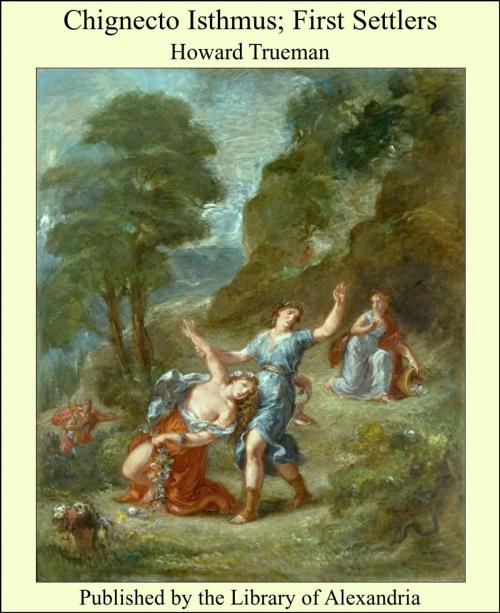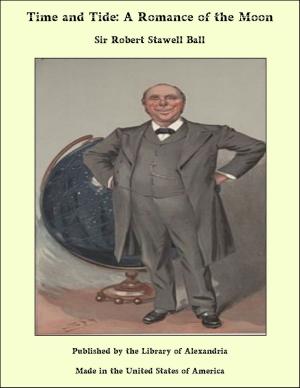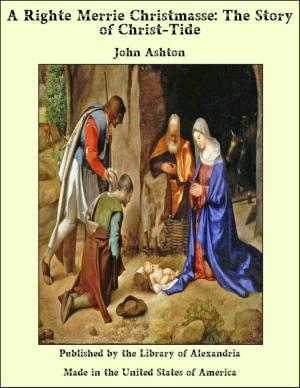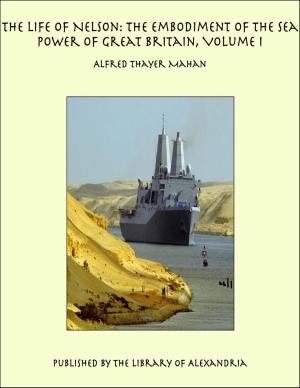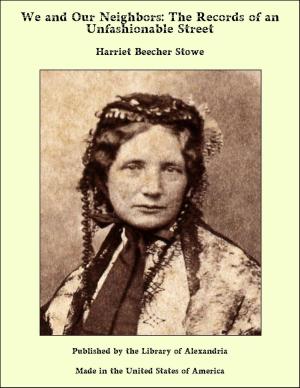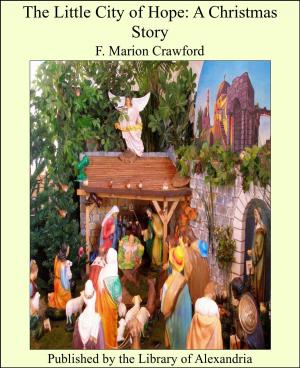Chignecto Isthmus; First Settlers
Nonfiction, Religion & Spirituality, New Age, History, Fiction & Literature| Author: | Howard Trueman | ISBN: | 9781465540065 |
| Publisher: | Library of Alexandria | Publication: | March 8, 2015 |
| Imprint: | Language: | English |
| Author: | Howard Trueman |
| ISBN: | 9781465540065 |
| Publisher: | Library of Alexandria |
| Publication: | March 8, 2015 |
| Imprint: | |
| Language: | English |
This book needs no introduction to the people of the Isthmus, whom it will most interest. I shall therefore attempt only to point out the plan the present work will take in the general history of Eastern Canada. Mr. Trueman does not profess to have attempted a complete history of the Isthmus. The earlier periods, prior to the coming of the Yorkshiremen, are so replete with interest that a many times larger work than the present would be necessary for their full consideration, but Mr. Trueman has treated them with sufficient fulness to show the historical conditions of the country into which the Yorkshiremen came. It is the history of these Yorkshiremen and their descendants which Mr. Trueman treats so fully and authoritatively, and withal, from a local standpoint, so interestingly; and his work is the more valuable for the reason that hitherto but little has been published upon this subject. Some articles have appeared in local newspapers, and there are references to it in the provincial histories, but no attempt has hitherto been made to treat the subject as it deserves. Those of us who are interested in history from a more scientific standpoint will regret that the material, particularly of the earlier part of the Yorkshire immigration could not have been more documentary and less traditional, but that it is as here given is not Mr. Trueman’s fault but a result of the nature of the case. It is not impossible, by the way, that such documents may yet be discovered, perhaps in some still unsuspected archives. It is to be remembered, however, that to a local audience, documents are of less interest than tradition, and the genealogical phases of history, here so fully treated, are most interesting of all. Mr. Trueman seems to have sifted the traditions with care, and he certainly has devoted to his task an unsurpassed knowledge of his subject, much loving labor, and no small enthusiasm. I believe the local readers of his work will agree with me that this history could not have fallen into more appropriate hands. It does not seem to me that Mr. Trueman has exaggerated the part played by the Yorkshiremen and their descendants in our local history. While it is doubtless too much to say that their loyalty saved Nova Scotia (then including New Brunswick) to Great Britain by their steadfastness at the time of the Eddy incident in 1776, there can be no doubt that it contributed largely to that result and rendered easy the suppression of an uprising which would have given the authorities very great trouble had it succeeded. But there can be no question whatever as to the value to the Chignecto region, and hence to all this part of Canada, of this immigration of God-fearing, loyal, industrious, progressive Yorkshiremen. Although they and their descendants have not occupied the places in life of greatest prominence, they have been none the less useful citizens in contributing as they have to the solid foundations of the upbuilding of a great people. It is of interest in this connection to note that Mr. Trueman’s book, although preceded in Nova Scotia by several county histories, is for New Brunswick, with one or two exceptions (in Jack’s “History of the City of St. John,” and Lorimer’s pamphlet, “History of the Passamaquiddy Islands”) the first history of a limited portion of the Province to appear in book form, although valuable newspaper series on local history have been published. May it prove the leader of a long series of such local histories which, let us hope, will not cease to appear until every portion of these interesting Provinces has been adequately treated
This book needs no introduction to the people of the Isthmus, whom it will most interest. I shall therefore attempt only to point out the plan the present work will take in the general history of Eastern Canada. Mr. Trueman does not profess to have attempted a complete history of the Isthmus. The earlier periods, prior to the coming of the Yorkshiremen, are so replete with interest that a many times larger work than the present would be necessary for their full consideration, but Mr. Trueman has treated them with sufficient fulness to show the historical conditions of the country into which the Yorkshiremen came. It is the history of these Yorkshiremen and their descendants which Mr. Trueman treats so fully and authoritatively, and withal, from a local standpoint, so interestingly; and his work is the more valuable for the reason that hitherto but little has been published upon this subject. Some articles have appeared in local newspapers, and there are references to it in the provincial histories, but no attempt has hitherto been made to treat the subject as it deserves. Those of us who are interested in history from a more scientific standpoint will regret that the material, particularly of the earlier part of the Yorkshire immigration could not have been more documentary and less traditional, but that it is as here given is not Mr. Trueman’s fault but a result of the nature of the case. It is not impossible, by the way, that such documents may yet be discovered, perhaps in some still unsuspected archives. It is to be remembered, however, that to a local audience, documents are of less interest than tradition, and the genealogical phases of history, here so fully treated, are most interesting of all. Mr. Trueman seems to have sifted the traditions with care, and he certainly has devoted to his task an unsurpassed knowledge of his subject, much loving labor, and no small enthusiasm. I believe the local readers of his work will agree with me that this history could not have fallen into more appropriate hands. It does not seem to me that Mr. Trueman has exaggerated the part played by the Yorkshiremen and their descendants in our local history. While it is doubtless too much to say that their loyalty saved Nova Scotia (then including New Brunswick) to Great Britain by their steadfastness at the time of the Eddy incident in 1776, there can be no doubt that it contributed largely to that result and rendered easy the suppression of an uprising which would have given the authorities very great trouble had it succeeded. But there can be no question whatever as to the value to the Chignecto region, and hence to all this part of Canada, of this immigration of God-fearing, loyal, industrious, progressive Yorkshiremen. Although they and their descendants have not occupied the places in life of greatest prominence, they have been none the less useful citizens in contributing as they have to the solid foundations of the upbuilding of a great people. It is of interest in this connection to note that Mr. Trueman’s book, although preceded in Nova Scotia by several county histories, is for New Brunswick, with one or two exceptions (in Jack’s “History of the City of St. John,” and Lorimer’s pamphlet, “History of the Passamaquiddy Islands”) the first history of a limited portion of the Province to appear in book form, although valuable newspaper series on local history have been published. May it prove the leader of a long series of such local histories which, let us hope, will not cease to appear until every portion of these interesting Provinces has been adequately treated
